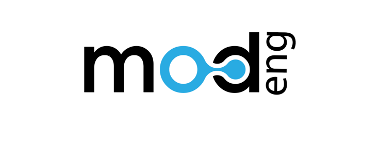Horizontal and Vertical System Integration
Services
Industry 4.0 Integration of All Pillars
- We offer a comprehensive service to integrate all pillars of Industry 4.0 within your organization. This holistic approach encompasses the integration of digital twin, IIoT, big data analytics, edge computing, OT cybersecurity, additive manufacturing, AR/VR, robotics, simulation, ensuring a seamless and efficient digital transformation.
- Our team will conduct an in-depth assessment of your current systems and processes across all Industry 4.0 pillars. We'll then develop a tailored strategy to integrate these technologies, aligning them with your business goals and ensuring interconnectivity and data flow between all components.
- The integration of all Industry 4.0 pillars leads to a highly efficient, innovative, and responsive business model. It enhances operational efficiency, drives innovation, and enables you to leverage the full potential of digital transformation, keeping you competitive in a rapidly evolving technological landscape.
Distributed Ledger Technology for Trust Assurance
- Recognizing the importance of trust in business collaborations, especially in horizontal integrations, we provide distributed ledger technology (DLT) solutions. DLT, including blockchain, ensures transparency, security, and trust in transactions and data sharing between companies.
- Our experts will implement DLT solutions tailored to your business needs, enabling secure and transparent data sharing and transactions with your partners. This includes setting up blockchain systems for supply chain tracking, smart contracts, and secure data exchange.
- Implementing DLT results in a trusted and secure environment for inter-company collaborations. It enhances transparency in transactions, ensures data integrity, and builds trust among all stakeholders. This trust is crucial for efficient collaboration, reducing the risk of disputes and fostering strong business relationships in an interconnected industry ecosystem.
ERP, CRM, and Supply Chain Integration
- Specializing in the integration of ERP, CRM, and supply chain management systems, this service focuses on creating a cohesive and efficient operational framework both within your organization and with external partners.
- We'll integrate your internal ERP and CRM systems for optimal data flow and business process efficiency, and extend this integration to encompass your supply chain, ensuring real-time data sharing and process synchronization with suppliers, distributors, and logistics providers.
- This comprehensive integration results in a unified operational system, enhancing internal efficiencies, streamlining supply chain operations, and improving responsiveness to market changes. It leads to better decision-making, enhanced customer satisfaction, and a stronger, more agile supply chain.
More About Horizontal and Vertical System Integration
Horizontal and Vertical System Integration in the context of Industry 4.0 are pivotal concepts that revolutionize how businesses streamline their operations and collaborate across various levels and sectors. These integrations represent the unification and optimization of processes and systems within an organization (vertical integration) and the synchronization of these processes across different businesses and industries (horizontal integration).
Understanding Vertical Integration: Vertical system integration refers to the alignment and interconnection of various layers within a single organization. This includes everything from the shop floor operations and machinery (operational technology) up to the higher-level systems like Enterprise Resource Planning (ERP) and Customer Relationship Management (CRM). The goal here is to create a seamless flow of data and processes across all levels of the organization. This integration enables companies to have a holistic view of their operations, leading to more informed decision-making, efficient resource allocation, and consistent performance across different departments.
Exploring Horizontal Integration: Horizontal integration, on the other hand, extends beyond the boundaries of a single organization. It involves linking a company’s processes and systems with external entities such as suppliers, partners, distributors, and sometimes even with competitors. The focus here is on creating an ecosystem where data and processes can flow smoothly between different organizations, resulting in a synchronized supply chain, collaborative product development, and shared services. This type of integration is crucial for businesses to respond effectively to market demands, optimize supply chain management, and foster innovation through collaborative efforts.
Benefits of System Integrations: The benefits of both horizontal and vertical integration are substantial:
- Enhanced Efficiency: Integration leads to streamlined operations, reducing redundancies and improving workflow efficiency.
- Improved Data Flow: Seamless data sharing across different levels and entities ensures that all stakeholders have access to real-time, accurate information.
- Better Decision Making: With comprehensive data integration, businesses can make more informed, data-driven decisions.
- Increased Flexibility and Scalability: Integrated systems are more adaptable to changes and can scale more easily with business growth.
- Enhanced Customer Experience: A unified approach to operations often translates into better customer service and more personalized customer experiences.
Challenges and Implementation: Implementing horizontal and vertical integration is not without its challenges. It requires a deep understanding of existing processes, a clear strategy, and often a significant investment in technology. Businesses must navigate issues related to data compatibility, system interoperability, and change management. Moreover, ensuring data security and privacy is paramount, especially when integrating systems across different organizations.
The Role of Emerging Technologies: Emerging technologies like the Internet of Things (IoT), Artificial Intelligence (AI), and cloud computing play a crucial role in facilitating these integrations. IoT devices enable real-time data collection at every level of the organization, AI helps in making sense of this vast data, and cloud computing provides the infrastructure needed for large-scale data storage and analysis.
Looking Forward: As we advance further into the digital age, horizontal and vertical system integration will become increasingly essential for businesses looking to stay competitive. These integrations enable organizations to be more agile, responsive, and efficient in their operations. They foster a collaborative environment that is conducive to innovation and growth, both within the organization and in the broader industry landscape. In essence, horizontal and vertical integrations are not just strategies for optimization; they are foundational elements for any business aiming to thrive in the interconnected, digital world of Industry 4.0.
